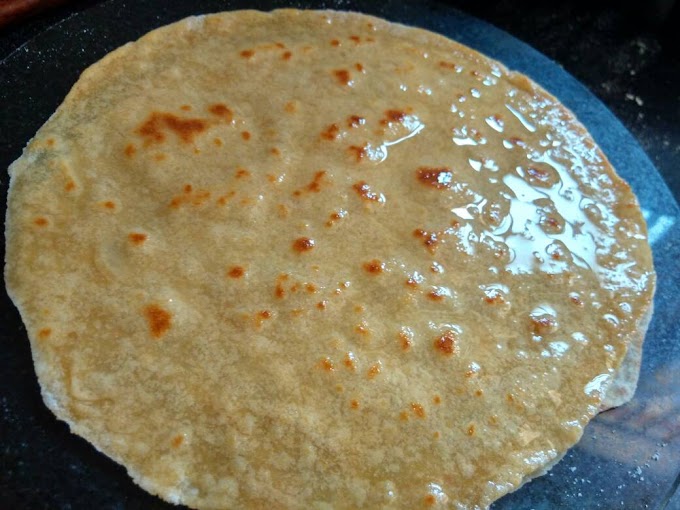Welcome to the ultimate guide on how to make delicious pav bhaji at home! If you're a fan of Indian street food, then you've probably already fallen in love with this mouthwatering dish.
But if you've never tried pav bhaji before, get ready for a culinary adventure that will leave your taste buds begging for more.
In this article, we'll take a deep dive into the world of pav bhaji – from its origins and different variations to step-by-step instructions on making it yourself.
Whether you're craving a quick weeknight dinner or planning a weekend feast with friends and family, mastering the art of pav bhaji will make you the star chef in your kitchen.
So grab your apron and let's get started on this flavorful journey through the tantalizing world of pav bhaji!
What is pav bhaji?
Pav bhaji is a beloved Indian street food that originated in the bustling city of Mumbai. It consists of a spiced vegetable curry, known as bhaji, served alongside soft and buttery bread rolls called pav. The dish is bursting with flavors and textures, making it a true delight for your taste buds.
The bhaji itself is made by mashing together various vegetables like potatoes, tomatoes, peas, bell peppers, and onions.
These veggies are cooked down until they form a thick and flavorful gravy. The magic happens when this delicious mixture is generously seasoned with spices like cumin, turmeric, coriander powder, red chili powder – each adding their own unique touch to the dish.
To serve pav bhaji in its traditional form, the pav buns are slathered with butter and toasted on a griddle until golden brown.
They're then served alongside the piping hot bhaji along with some chopped onions and lemon wedges for that tangy twist.
One of the most amazing things about pav bhaji is its versatility. You can customize it to suit your preferences by adding extra toppings like cheese or paneer (Indian cottage cheese). Some even go as far as adding a dollop of butter on top – because why not?
Whether you enjoy it as an evening snack or prepare it for dinner parties at home, pav bhaji never fails to impress.
So get ready to embark on this culinary adventure and learn how to make this iconic Indian street food right in your kitchen!
The history of pav bhaji
The history of pav bhaji is a fascinating tale that takes us back to the bustling streets of Mumbai in the 1850s.
It all started with the mill workers who needed a quick and filling meal during their lunch breaks. The enterprising street vendors came up with the idea of mixing leftover vegetables, spices, and butter together to create a delicious mash called bhaji.
Originally, pav bhaji was made using bread rolls (pav) that were toasted on a griddle with generous amounts of butter.
This combination of flavorful vegetable curry and warm buttered bread became an instant hit among the working class.
Over time, pav bhaji evolved to include different variations and flavors. Some versions use additional ingredients like paneer or cheese for added richness, while others incorporate unique spice blends for an extra kick.
Today, pav bhaji has become one of Mumbai's most iconic street foods, loved by people from all walks of life.
It has even gained popularity beyond India's borders as Indian cuisine continues to capture hearts around the world.
Whether you enjoy it at a roadside stall or make it at home, pav bhaji remains a beloved dish that embodies the spirit and flavors of Mumbai's vibrant culinary scene. So next time you're craving something hearty and spicy, give this tasty treat a try!
The different types of pav bhaji
When it comes to pav bhaji, there are various types that you can try. Each one offers a unique twist on this beloved Indian street food.
Classic Pav Bhaji:
This is the traditional version of pav bhaji that originated in Mumbai. It consists of a spicy vegetable curry made with potatoes, tomatoes, onions, and a medley of spices. The curry is served with buttered pav buns that are toasted until golden brown.
Cheese Pav Bhaji:
For all the cheese lovers out there, this variation takes the classic recipe up a notch by adding generous amounts of grated cheese on top of the bhaji.
As the cheese melts into the piping hot curry, it adds an extra layer of creaminess and richness to every bite.
Jain Pav Bhaji:
This type of pav bhaji caters to those who follow a strict vegetarian diet without consuming onions or garlic.
It is prepared using only vegetables like cauliflower, capsicum, peas, and carrots along with select spices that do not include onion or garlic powder.
Tawa Pulao Pav Bhaji:
A delicious fusion dish where two popular street foods come together – tawa pulao and pav bhaji! The rice used for making tawa pulao is mixed with the signature masala from pav bhaji to create a flavorful combination that will leave your taste buds craving more.
Masala Pav Bhaji:
In this variation, instead of serving buttered pavs alongside the bhaji curry, thick slices of bread are dipped in besan (gram flour) batter seasoned with spices and fried until crispy golden brown pakoras (fritters).
These fritters are then served hot along with spicy masala gravy as an alternative way to enjoy pav bhaji
With so many different types available to choose from, there's always something new and exciting for everyone's palate when it comes to enjoying this iconic Indian street food.
So go ahead and try out these variations, get creative in the kitchen, and make your own unique version of pav bhaji!
How to make pav bhaji at home
Pav bhaji, a popular street food from Mumbai, is a delicious and satisfying dish that you can easily make at home.
The secret to making the perfect pav bhaji lies in the balance of flavors and the right technique. Here's a step-by-step guide on how to make pav bhaji at home.
Gather all your ingredients - potatoes, tomatoes, onions, capsicum, peas, garlic, ginger, and spices like turmeric powder and red chili powder.
Boil the potatoes until they are soft enough to mash. In a separate pan, sauté the onions until they turn golden brown. Add chopped tomatoes and cook them till they become mushy.
Next comes the exciting part – mashing! Mash the boiled potatoes with a masher or fork until they are smooth in texture. Now add this mashed potato mixture to the pan with cooked onions and tomatoes. Stir well to combine all the flavors.
To enhance the taste of your pav bhaji even further, add some finely chopped capsicum for an extra crunchiness. You can also include green peas for added sweetness.
Now it's time for spices! Add turmeric powder for its vibrant color and earthy flavor along with red chili powder for that desired kick of heat (adjust according to your spice preference). Don't forget salt as per taste!
Mix everything together thoroughly so that all ingredients blend well. Let it simmer on low flame for about 10-15 minutes so that all flavors meld together beautifully.
While your bhaji simmers away happily on one side of the stove-top; let's prepare those buttered pavs which will perfectly complement this delightful dish!
Slit open store-bought pavs or buns horizontally but not completely through – just enough so you can evenly spread butter on both sides without breaking them apart!
Heat some butter in another pan or griddle over medium heat; once melted add minced garlic cloves followed by a sprinkle of pav bhaji masala. Toast the pavs on both sides and your buttered, garlicky pavs are ready!
Once the bhaji is cooked to perfection (it should be a thick consistency), turn off the flame and garnish it with some freshly chopped coriander leaves and a dollop of butter.
Finally, all that’s left is to plate it up! Place a generous spoonful of pav bhaji on each plate, top it with some fresh onions, tomatoes & cilantro and serve it piping hot with buttered pavs on the side. Enjoy!
Tips for making the perfect pav bhaji
Use Fresh and Quality Ingredients: To achieve a delicious pav bhaji, it is essential to use fresh vegetables like potatoes, tomatoes, onions, and capsicum. Ensure that you select ripe tomatoes for a tangy flavor. Also, opt for high-quality spices to enhance the taste.
Properly Cook Vegetables: The key to an authentic pav bhaji lies in well-cooked vegetables. Boil the potatoes until they are soft and mash them properly. Sauté the veggies on medium heat until they become tender and flavorful.
Spice it Up: Pav bhaji masala is what gives this dish its distinct taste. Add a generous amount of pav bhaji masala while cooking to bring out those spicy flavors that we all love.
Butter Makes it Better: Don't shy away from using butter generously while making pav bhaji at home! It adds richness and enhances the overall taste of your dish.
Get Creative with Garnishes: Top off your pav bhaji with some finely chopped onions, coriander leaves, lemon juice, and a dollop of butter before serving. These garnishes add freshness and elevate the flavors even more.
Use Fresh Pav Buns: Nothing beats freshly baked or store-bought pav buns when serving up your homemade pav bhaji feast! Lightly toast them with butter on both sides for that perfect crispiness.
Remember these tips while making your own version of pav bhajiat home,and enjoy this classic Indian street food delicacy bursting with flavors anytime you crave something delightful!
Conclusion
Making pav bhaji at home can be a delightful culinary experience. Whether you're a fan of spicy, tangy, or mild flavors, there's a pav bhaji recipe out there to suit your taste buds.
We've explored the origins and different variations of this beloved street food dish. From its humble beginnings as a quick and convenient lunch option for textile mill workers in Mumbai to its popularity spreading across India and even internationally, pav bhaji has truly become an iconic part of Indian cuisine.
Now armed with the knowledge of what makes a great pav bhaji and how to recreate it in your own kitchen, you can confidently embark on your homemade pav bhaji adventure.
Remember to use fresh ingredients, adjust the spice levels according to your preference, and don't forget those essential toppings like chopped onions, coriander leaves, lemon wedges, and butter-slathered pavs!
Whether enjoyed as a snack or a hearty meal, pav bhaji offers comfort and satisfaction like no other. So gather your family or friends around the table and savor every bite of this mouthwatering delight that brings people together through its rich flavors.
So go ahead – unleash your inner chef and create magic in the form of delicious homemade pav bhaji!








